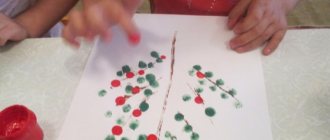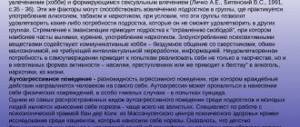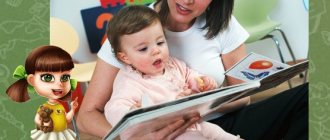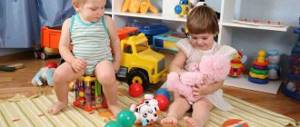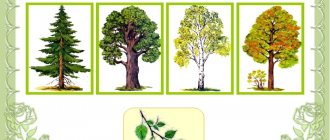Parenting can be expressed in friendliness towards the child, or even in the complete immersion of parents in the atmosphere of childhood. You can educate through the process of drawing, jumping into hopscotch, and building a miracle snowman. You can also read or watch magical stories together.
Does a modern child need children's fairy tales that go back to a considerable age? Will a child of the technological era understand all these bench stoves, humpbacked skates, and sleighs that they drive themselves? How to more effectively educate with a fairy tale: read a picture book, watch a video or listen to an audio recording?
The Its Kids team is ready to answer these and many other parental questions in this article.
Do children need fairy tales?
Until the age of 12, a child thinks with the right hemisphere of the brain, which is responsible for creativity. It is not surprising that at this age children understand the language of images very well. They can correctly interpret allegorical phrases, and sometimes they themselves complement them in extraordinary ways.
Therefore, children's fairy tales for a child are not just fun and a reason to sit quietly for half an hour. This is the soil into which parents throw seeds to obtain a harvest of kindness, decency, and success in 20 years.
A children's fairy tale is a tool for a little person to learn about the big world and his place in it. When a child listens to or reads a fairy tale, he definitely identifies himself with one of the heroes and begins to imitate him in life. Kids are very wise people; they never choose negative characters as models.
For a child, a fairy tale is reality, not a fictional story; children know how to live fairy tales, receiving maximum influence on the psyche and forming an attitude towards the world around them through magical stories.
Raising preschool children with fairy tales
Elena Frolova
Raising preschool children with fairy tales
“ A fairy tale is a seed from which a child’s emotional assessment of life’s phenomena grows.” V. A. Sukhomlinsky.
Today, the most effective and proven methods and means of raising children . Fairy tales represent one of the most ancient means of moral and ethical education , and also form behavioral stereotypes of future members of adult society. In this regard, the rejection of this method of raising children seems , if not a mistake, then a noticeable omission on the part of educational institutions and parents.
Parenting with a fairy tale is one of the most ancient methods of raising children . Through fairy tales , our ancestors passed on to the younger generation moral norms, traditions and customs, their life experiences and attitudes towards the world. The heroes of fairy tales were an example for the child: from their experience he learned how to act and what not to do. Such an example is more understandable to the child than the categorical parental “No!”
But in order for education with fairy tales to be effective , it is not enough to simply tell the child the first fairy tale . A fairy tale should be selected depending on the age of the child and the characteristics of his character. Let's say, up to two years of age, education with a fairy tale does not make sense - at such a tender age, a child is unlikely to be interested in a fairy tale . to the perception of fairy tales gradually, from infancy, starting with lullabies and rhythmic rhymes.
The younger the child, the simpler the plot of the fairy tale . In the period from 2 to 3.5 years, classic children's fairy tales , on which more than one generation of children : “Teremok”
,
"Turnip"
.
They are good because the action in them is built on the principle of cumulation - repetition. “Grandma for the baby, baby for the turnip.”
This makes it easier for the child to navigate the narrative.
After a while, you can move on to longer and more meaningful fairy tales : “Little Red Riding Hood”
,
“The Three Little Pigs”
.
At this age , fairy tales about animals are often more understandable to a child . The world of adults seems too complicated to a child; there are many rules and restrictions. And the plots of fairy tales about animals are more accessible to his understanding. At the age of , fairy tales about mutual assistance , the triumph of justice and truth over injustice and deception
will go best “I” appears in the child’s vocabulary.
, he begins to realize himself as a person.
The child begins to identify himself with the main character of the fairy tale , so you need to select those fairy tales in which there is a hero with whom the child could associate himself. At this age , the process of self-identification begins, so the gender of the main character must match the gender of the child - otherwise the child will lose interest in the fairy tale , and education with a fairy tale will be ineffective .
The main character of a fairy tale should be an example to follow. To raise a 3-5 year old child, it is better to choose fairy tales in which you can clearly see who is good and who is bad, where is black and where is white. The child does not yet know how to distinguish between nuances and halftones. You should avoid fairy tales that romanticize the lifestyle of a robber, etc. - the child may take away from them not what you expect, and education with a fairy tale will be ineffective .
Older preschoolers (5-6 years old)
You can already offer
fairy tales - books by Astrid Lindgren, “Mary Poppins”
by Pamela Travers,
stories and tales by Nikolai Nosov, children’s detective stories by Enid Blyton . There are so many good children's books! The child no longer just identifies himself with the main characters, but can draw parallels between their behavior and his own: “But if I were in his place, I would do something wrong.”
.
At this age, education with a fairy tale helps the child understand that there are no absolutely bad and absolutely good people in the world: positive characters can make mistakes, and negative ones can do good deeds (albeit unconsciously)
. But there is no need to rush through this stage: until the child clearly understands from simpler
fairy tales , what is “good”
and what is
“bad”
, he will not be able to distinguish the nuances.
For education with a fairy tale to bear fruit , you need not only to choose the right fairy tale , but also to teach it correctly: discuss the fairy tale so that he can understand its moral. Just don’t impose it on the child, but let him draw his own conclusions.
When can you start reading fairy tales to your child?
When a child begins to perceive fairy tales and at what age a fairy tale influences the child best, each mother decides for herself. But it has been scientifically proven that a sixteen-week fetus in the womb is receptive to the mother’s gentle, even speech. This means that pregnancy is the time to start reading fairy tales.1.
Children in the womb
Very responsible parents begin to introduce the baby to the world through fairy tales, only after hearing his first move. It cannot be said that a fairy tale is useless for a child in the womb.
Calming sounds and his mother’s gentle and even voice are important to him. He will listen with equal success to the fairy tale about Kolobok for the little ones, and the fairy tale about Chippolino for the older ones, and articles from a women's magazine and from a scientific one.
There is no need to specially select fairy tales for children in the womb - they will not show a miracle after birth and will not begin to react in any special way to a familiar story, and will not remember what they heard while in their mother’s tummy when they are able to share memories.
Newborns
Fairy tales for newborns are the same set as for babies in the belly: from “The Straw Bull” to scientific treatises in the first weeks of life.
As the baby grows up, it is necessary to switch to short nursery rhymes, songs and nursery rhymes. At this age, rhythm and rhyme are important for the baby - they are necessary for the proper development of the child’s speech.
Children aged 1.5-3 years
The perception of prose in children begins at the age of two (plus or minus a couple of months). But when reading fairy tales to a two-year-old child, it is important not to overload him with information from long stories with a twisted plot.
At this age, children are enthusiastic about “Little Little Fox and Little Wolf Brother,” “Rukavichka,” and “Ryaba Hen.”
Children aged 4-6 years
This period is called the most suitable for fairy tales: the child already has a fairly developed imagination. He not only understands the plot and builds associations with fairy-tale characters, but is also able to evaluate their actions, express his own opinion, and fantasize on the topic: “What would I do?”
Children 7-12 years old
Fairy tales remain a priority for schoolchildren. But they are no longer satisfied with a short story of three pages; they read fairy tales and fairy tale novels. They are interested in a complex plot, many characters, a mixture of feelings, romance and struggle.
Teenagers
Few teenagers admit that they read children's fairy tales. But they read: Harry Potter, and the Snow Queen, and the Little Mermaid... True, they call them “fantasy” - they are not the kind of kids to be fooled by fairy tales.
But the essence remains the same: magical stories are needed for self-affirmation in society. The influence of a fairy tale about the ugly duckling, for example, will help a girl who doesn’t consider herself pretty to be more confident, and “The Clock” will teach her responsibility for her choices.
The formation of personality under the influence of fairy tales begins in childhood and continues until adolescence.
The role of fairy tales in the development and upbringing of a child
Daria Dobrunova
The role of fairy tales in the development and upbringing of a child
Topic : “ The role of fairy tales in the development and upbringing of a child ”
Prepared by teacher Dobrunova Daria Vladimirovna
Relevance:
The role of fairy tales in the development of children is very great . Why? Let's think about it. Who among us doesn't love fairy tales ? Of course everyone loves them. A fairy tale is something kind , cozy and interesting, something that takes us back to childhood. Every writer considers it his duty to write at least one short story where good triumphs over evil, and love triumphs over sadness and misfortune. Fairy tales will always be in fashion , they will be filmed and remade in a new way, only one thing will remain unchanged - their role in the development and formation of a child’s personality.
Currently, fairy tales , like other values of traditional culture, have noticeably lost their purpose. This was facilitated by modern books and cartoons with a simplified Disney style of retelling famous fairy tales , often distorting the original meaning of the fairy tale , turning the fairy-tale action from morally instructive into purely entertaining . This interpretation imposes on children certain images that deprive them of a deep and creative perception of the fairy tale .
Scientists have proven that reading fairy tales is necessary for the development of a child’s thinking . A fairy tale teaches a child to think , evaluate the actions of heroes, trains attention, memory, and develops speech .
Many parents sometimes underestimate the role of fairy tales in shaping a child's personality.
In fact, fairy tales , like games, are an integral part of the development and upbringing of every child .
Preschool age is the age of fairy tales . A fairy tale should enter the life of every child from a very early age and accompany him throughout preschool age.
How are fairy tales ? Firstly, by listening to a fairy tale , the child receives a beautiful and correct sample of speech, which is very important for speech development . A fairy tale helps to properly build a dialogue with your interlocutor. A fairy tale helps develop coherent speech . fairy tales from early childhood begin to speak correctly much faster.
Fairy tales also a source of new words unfamiliar to the child, which are important to pay attention to, explain the meaning and, thereby, increase his vocabulary. Also, thanks to the telling of fairy tales , the child subsequently learns to consistently convey the plot, i.e., retell .
Secondly, fairy tales are moral lessons. After all, fairy-tale heroes are very different: kind - evil, affectionate - rude. With their help, you can show children the good and the bad, what to do and what not to do. A fairy tale teaches empathy , develops imagination , thinking, creativity, and memory.
Thirdly, a fairy tale is a way to communicate with a child in a clear and understandable language.
The role of fairy tales in raising a child is not only a pleasant pastime. After all, a child inevitably learns to understand the internal state of his favorite characters and tries to analyze certain of their actions. For a while, he forgets about his real worries and plunges into a fairy-tale world , where the forces of good always win.
Remember that by telling a child fairy tales , we develop his inner world - it has been scientifically proven that children to whom their parents began reading fairy tales began to speak earlier, and their speech was more competent. Among other things, a fairy tale allows you to form the foundations of communication and behavior.
Children who constantly listened to fairy tales adapt much faster and less painfully to kindergartens and schools. It is these children who quickly find a common language with strangers, and it is they who practically have no complexes in life. Therefore, if you want your child to perceive life positively , to easily accept failures, while learning the proper lesson from them, to rejoice at success and move towards his goal, read fairy tales . Read fairy tales as often as possible and for as long as possible: remember, fairy tales are not just a pleasant, interesting pastime, but they are also one of the most powerful tools that help children develop .
Fairy tales are an excellent tool for personality development . At the same time, fairy tales develop feelings , not reason. If, while reading fairy tales , an adult pays attention to the fairy-tale characters , then it is possible to identify some of the child’s psychological problems at an early stage and, accordingly, eliminate them at a very early stage.
A fairy tale - a lie turns out to be the real truth: it teaches us to be kind and fair, to resist evil, to look down on cunning people and flatterers. It affirms the popular principles of life: honesty, devotion, courage, collectivism.
Why are fairy tales so cruel?
This question arises more likely in an adult than in a child. If you look at the fairy tale through the eyes of a person over 25, you will notice a lot of unpleasant and repulsive moments: cruel parents took their children to the forest and left them to disappear there, instead of looking for a job with a good salary and providing their children with normal food and clothing.
Or here’s another thing: an elderly couple gets a child for the sole purpose of having him look after them in old age. And at the age of ten, this child already earns money for food: both for himself and for his grandfather and wife.
Any adult will criticize such a plot to smithereens: well, how can this be? What does this fairy tale teach? And children perceive even aggressive moments with understanding: “a bunny ran along the path and his legs were cut,” because they know:
- In a fairy tale, everything will end well - it cannot be otherwise.
- Fairy-tale characters are taught to be attentive, independent, kind and responsible - and children learn along with them.
So is it possible to read “scary” fairy tales to children? Psychologists say that it is even necessary. Such stories act as a kind of vaccination for the baby - they give him a certain amount of stress, strengthen his psychological immunity, and prepare him to face reality, which is much harsher than any fairy tale.
What is fairy tale therapy?
Reading and discussing fairy tales with a child in the first ten years of his life forms a kind of bank of life situations for a little person. Faced with similar things in reality, he already knows how to behave, how to interact with people, how to realize himself.
And - yes - “scary” fairy tales also have their place in this bank and are useful. They help the child form a cause-and-effect relationship between fairy-tale events, warn, and teach.
But if you just read a fairy tale and don’t discuss it with your child, the bank will remain in a passive state. It is the comprehension of history that has a therapeutic effect - through a fairy tale, a child explores his capabilities and abilities, learns to think about his purpose, learns “fairytale” laws and tries to apply them in life.
What to choose from the variety of fairy tales?
Here you need to rely not only on your taste, but also on the age of the child, his self-identification. For example, children under five years old love to imagine themselves as various animals; they will be interested in fairy tales about animals.
Younger schoolchildren love magic and wonderful transformations.
Children from 10 to 13 years old want love and a beautiful wedding to be present in the fairy tale, but before that they must charm, conquer, and disenchant the chosen one.
Folk tales
The simplest, most unpretentious, wise and beloved. The embodiment of worldly wisdom in short instructive stories. Thanks to a folk tale, a child absorbs the traditions of his ancestors and adopts their habits.
Through a folk tale, it is easier for a child to understand the behavior of his parents and accept their instructions.
One cannot fail to mention the developmental value of a folk tale - it forms a kind, sympathetic, resourceful personality, often with unconventional thinking.
Author's fairy tales
Bright, unusual, easily recognizable, with an exciting plot. Author's fairy tales can be classified as brands: who doesn't immediately recognize the story about Thumbelina or Cinderella?
These are timeless stories that generations have grown up with. For modern children, they are necessary not only as a Golden Fund, but also as a subject for discussion or even discussion. Why did Little Red Riding Hood listen to the Wolf if he looked suspicious? Why did Thumbelina have to go through so many trials on the way to happiness, and what did they give her?
Modern fairy tales
Most of the stories were created by teachers and psychologists based on their experience working with children and the results of studying relationship problems and learning in children.
Modern fairy tales for kids are aimed at learning letters and numbers. Stories for older children touch on issues of relationships in the family, with peers, and develop the best qualities in the child.
Psychocorrectional tales
Aimed at correcting some deviations in the psychological development of the child: combating fears, child aggression, disobedience, and foul language.
After reading such a fairy tale, there is no need to insist on immediately discussing it with your child. You need to leave the baby alone with his thoughts, before unobtrusively expressing your opinion about the fairy tale story.
Education with a fairy tale
For some reason, some of us associate the word “education” exclusively with moral teachings: don’t go there, don’t do that, you can’t do that. But the effect of such upbringing is low: the child may go into the “to spite my mother’s ears I’ll freeze my ears off” mode. Why not try a more unobtrusive method of parenting - for example, parenting with a fairy tale ?
Raising children with fairy tales is one of the most ancient methods of raising children. Through fairy tales, our ancestors passed on to the younger generation moral norms, traditions and customs, their life experiences and attitudes towards the world. The heroes of fairy tales were an example for the child : from their experience he learned how to act and what not to do. Such an example is more understandable to the child than the categorical parental “No!”
But for education with fairy tales to be effective, it is not enough to simply tell your child the first fairy tale that comes along. A fairy tale should be selected depending on the age of the child and the characteristics of his character . Let's say that up to two years of age, raising a child with a fairy tale does not make sense - at such a tender age, a child is unlikely to be interested in a fairy tale. A child should be introduced to the perception of fairy tales gradually, from infancy, starting with lullabies and rhythmic rhymes.
The younger the child, the simpler the plot of the fairy tale should be . In the period from 2 to 3.5 years, classic children's fairy tales, on which more than one generation of children have grown up, go well: “Teremok”, “Turnip”. They are good because the action in them is built on the principle of cumulation - repetition. “Grandma for the baby, baby for the turnip...” This makes it easier for the child to navigate the narrative. After a while, you can move on to longer and more meaningful fairy tales: “Little Red Riding Hood”, “The Three Little Pigs”.
By the way, at this age a child often understands fairy tales about animals more clearly. The world of adults seems too complicated to a child; there are many rules and restrictions. And the plots of fairy tales about animals are more accessible to his understanding. At the age of 2-3 years, fairy tales about mutual assistance, the triumph of justice and truth over injustice and deception will go best .
At three years old, the word “I” appears in the child’s vocabulary, and he begins to recognize himself as an individual . The child begins to identify himself with the main character of the fairy tale, so you need to select those fairy tales that have a hero with whom the child could associate himself. By the way, at the same age the process of self-identification begins, so the gender of the main character must match the gender of the child - otherwise the child will lose interest in the fairy tale, and education through fairy tales will be ineffective.
Please note that the main character of a fairy tale should be an example to follow. To raise a 3-5 year old child, it is better to choose fairy tales in which you can clearly see who is good and who is bad , where is black and where is white. The child does not yet know how to distinguish between nuances and halftones. You should avoid fairy tales that romanticize the lifestyle of a robber, etc. - the child may take away from them not what you expect, and education with a fairy tale will be ineffective.
Older preschoolers (5-6 years old) can already be offered literary fairy tales - books by Astrid Lindgren, “Mary Poppins” by Pamela Travers, stories and tales by Nikolai Nosov, children’s detective stories by Enid Blyton... You never know how many good children’s books there are! The child no longer just identifies himself with the main characters, but can draw parallels between their behavior and his own : “But if I were in his place, I would do something wrong...”.
At this age, education with a fairy tale helps the child understand that there are no absolutely bad and absolutely good people in the world: positive heroes can make mistakes, and negative ones can do good deeds (even if unconsciously). But there is no need to rush through this stage: until the child clearly understands from simpler fairy tales what “good” is and what “bad” is, he will not be able to distinguish nuances .
For education with a fairy tale to bear fruit, you need not only to choose the right fairy tale, but also to teach it correctly: discuss the fairy tale a little with the child so that he can understand its moral. Just don’t impose it on the child, but let him draw his own conclusions. A good trick is to come up with a fairy tale with your child in which he will be the main character . You will develop your imagination, and there will be an educational effect.
By the way, education with fairy tales is not the only area of application for children's fairy tales . Child psychologists and psychotherapists actively use fairy tale therapy for children to combat various psychological problems.
Related publications:
Audio tale, film or book?
What’s better: sit down and read a magical story from a book to your child, or just turn on a movie, or listen to children’s fairy tales online? Modern busy parents proceed from the position that what is simpler and does not take up much time is better.
Are they right?
Classic book reading is the best way for an adult and a child to communicate, but if parents are very pressed for time, there is nothing wrong with watching or listening to children's fairy tales.
The generation that is now in their early thirties is well aware of cassettes and discs with fairy tales and songs from popular cartoons and children's films. It was pleasant, interesting and useful for you to listen to them, right? So why should modern children perceive a fairy tale performed by a professional speaker any differently?
A fairy tale in any form shapes a child’s worldview, enriches his vocabulary, and develops his imagination. And the audio tale also plays the role of a reliable and patient baby monitor if you are traveling with a child in a car.

